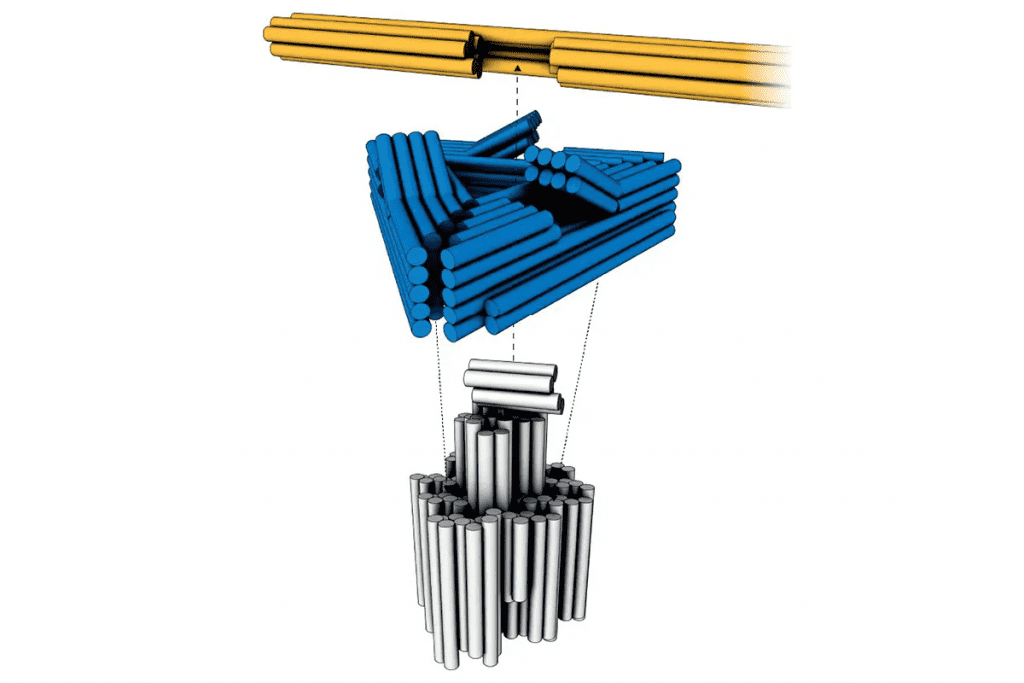Researchers at the Technical University of Munich (TUM) have developed the world’s first electric nanomotors made of DNA. The self-assembling structures can be activated by an electric charge to spin a ratcheting rotor arm.
The motor was developed with the help of a technique called DNA origami. The method comprises intricately folding strands of DNA into three-dimensional shapes, with past examples including virus traps, immune-evading drug delivery systems, and even microscopic Van Gogh replicas.
For the new study, the team used this process to make a molecular motor out of DNA for the first time. The motor has a rotor arm measuring up to 500 nanometers (nm) long, which is mounted on a base about 40 nm high that’s fixed to a glass plate. Wrapped around the tip of the base, just below the rotor, is a platform with several ratcheting obstacles built into its surface, which controls the direction that the rotor can spin.
An AC voltage is applied from two electrodes, which causes the rotor to spin. The team can control the speed and direction of that rotation by changing the direction of the electric field, and adjusting the frequency and amplitude of the applied voltage.
“If we develop the motor further we could possibly use it in the future to drive user-defined chemical reactions,” said Hendrik Dietz, lead author of the study. “Then, for example, surfaces could be densely coated with such motors. Then you would add starting materials, apply a little AC voltage and the motors produce the desired chemical compound.”
The research was published in the journal Nature.

